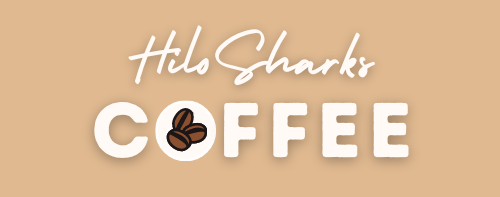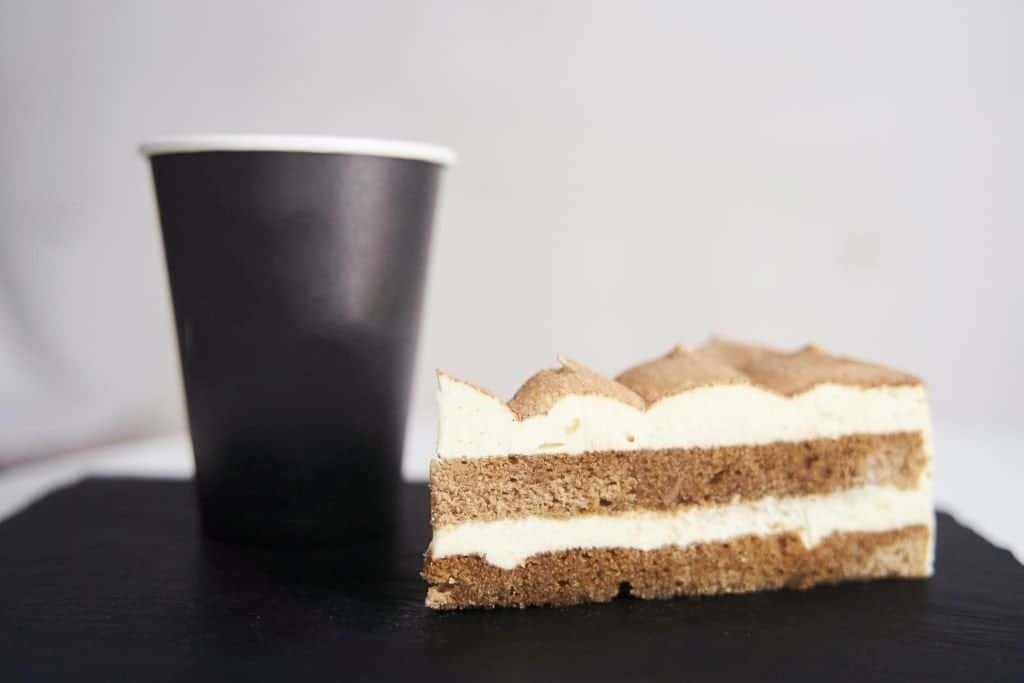Ever wondered where the delicious coffee cake that perfectly complements your morning brew comes from? Believe it or not, this sweet treat dates back to 17th-century Northern and Central Europe.
In this blog post, we will uncover the fascinating journey of coffee cake from its humble beginnings to the popular dessert we enjoy today. Ready for a tasty history lesson? Let’s dive in!
Key Takeaways
- Coffee cake originated in 17th-century Northern and Central Europe, where it was enjoyed alongside coffee as a sweet treat.
- The original honey cakes evolved over time to become the coffee cake we know today, with various ingredients such as sour cream, cinnamon, nuts, and streusel toppings being added.
- Coffee cake has diverse cultural and regional variations around the world, including Germany’s Streuselkuchen, Austria’s Gugelhupf, Scandinavia’s Kringle, and the United States’ incorporation of sour cream.
History of Coffee Cake
Coffee cake has a fascinating history that dates back to the 17th century in Northern or Central Europe, where it originated and became popular.
Originated in Northern or Central Europe
Coffee cake started in Northern or Central Europe. People there began to enjoy sweet cakes with their coffee. In the 17th century, markets were full of sweet yeasted cakes. These yummy treats soon became known as coffee cake.
Popular during the 17th century
During the 17th century, coffee cake was all the rage in Northern and Central Europe. This is where it originated. Honey cakes served with tea or coffee were very popular back then.
They had a sweet taste that people loved.
The honey cakes slowly changed into what we now call coffee cake. In markets across Northern and Eastern Europe, you could find many kinds of sweet yeasted cakes for sale. The British started calling these treats “tea cakes” or “coffee cakes”.
These names stuck around till today!
Honey cakes evolved into modern coffee cake
Long ago, honey cakes were very popular. People made these sweet treats using honey, eggs, spices, butter, and cream. Over time, these simple honey cakes changed a lot. They started looking more like the coffee cake we know today.
This change didn’t happen overnight; it took hundreds of years! Now people all over the world love to eat this yummy baked good with their coffee.
Variations of Coffee Cake
Coffee cake has a wide range of cultural and regional variations, with different ingredients and methods used in its preparation.
Cultural and regional variations
Coffee cake has a rich history and is enjoyed in many different styles around the world. Here are some interesting cultural and regional variations of coffee cake:
- Germany: Streuselkuchen is a popular variation in Germany. It features a crumbly, streusel topping made from butter, sugar, and flour. This adds a delightful texture and sweetness to the cake.
- Austria: In Austria, coffee cake often takes the form of Gugelhupf, which is a ring-shaped cake. It can be made with various ingredients such as almonds or chocolate, and it’s often served during special occasions.
- Scandinavia: Scandinavian countries like Denmark have their own take on coffee cake. They typically make Kringle, a flaky pastry filled with nuts or fruits. It’s often enjoyed with a cup of coffee during gatherings or holidays.
- United States: In the US, coffee cakes became popular through German immigrants who brought their baking traditions with them. American coffee cakes often incorporate ingredients like cinnamon and sour cream, resulting in a moist and flavorful treat.
Different ingredients and methods
Coffee cakes can be made with various ingredients and using different methods. Here are some examples:
- Flour: The main ingredient in coffee cake is flour, which provides the structure and texture.
- Yeast: Traditional coffee cakes may use yeast to help the cake rise and create a light and airy texture.
- Eggs: Eggs add moisture and richness to the cake, making it tender.
- Sugar: Sweetness is an essential element of coffee cake. Sugar is used to sweeten both the cake batter and the topping.
- Nuts: Some coffee cakes feature nuts such as walnuts or almonds, adding crunch and extra flavor.
- Spices: Cinnamon is a popular spice used in many coffee cake recipes. It adds warmth and depth of flavor.
- Dried Fruits: Raisins, currants, or dried cranberries can be added to the batter for a burst of sweetness.
- Streusel Topping: A common feature of coffee cakes is a crumbly streusel topping made with flour, sugar, butter, and sometimes nuts. It adds a delicious crunchy texture.
- Glaze or Icing: Some coffee cakes may be drizzled with a glaze or topped with icing for extra sweetness and visual appeal.
The 20th Century and Beyond
In the 20th century, coffee cake gained popularity in both the United States and the United Kingdom. American coffee cake recipes incorporated sour cream, resulting in a moist and tender texture.
In fact, Pennsylvania manuscripts from this time period often featured sour cream coffeecake recipes.
Popularity in the US and UK
In the 20th century and beyond, coffee cake gained popularity in both the United States and the United Kingdom. In the US, it is believed that German immigrants brought their love of kaffeeklatsch (a social gathering over coffee) and introduced coffee cakes to American culture.
These cakes often incorporated ingredients like cinnamon, nuts, and streusel toppings. Meanwhile, in the UK, various baked goods served with hot beverages were referred to as “tea cakes” or “coffee cakes.” Although the exact origins are unclear, advertisements for British coffee cake can be traced back as early as 1934.
Today, you can find different variations of this delicious treat on menus at places like Starbucks. It’s important to note that despite its name, coffee cake doesn’t actually contain any coffee!
Incorporation of sour cream in American coffee cake
In the 20th century, a significant development occurred in the history of coffee cake: the incorporation of sour cream in American recipes. Sour cream was introduced in American supermarkets during this time and quickly became a popular ingredient for baking.
When it came to coffee cake, adding sour cream created a richer and more moist cake base. The creamy texture and tangy flavor of sour cream elevated the taste of the cake, making it even more delicious.
To this day, American coffee cake recipes commonly call for sour cream as an essential ingredient. So if you want to make an extra fluffy and flavorful coffee cake, don’t forget to include some creamy sour cream in your recipe!
Making Coffee Cake

To make coffee cake, gather ingredients such as flour, sugar, butter, eggs, baking powder, and cinnamon. Mix them together in a bowl until well combined. Then pour the batter into a greased baking dish and sprinkle a crumb topping over the top.
Bake in the oven at 350 degrees Fahrenheit for about 35-40 minutes or until golden brown and cooked through. Enjoy it warm with a hot cup of coffee!
Ingredients
Coffee cake is a delicious pastry dessert that can be enjoyed any time of the day. Making coffee cake is not too complicated, and you only need a few ingredients to get started. Here are the ingredients you will need:
- Flour
- Sugar
- Butter
- Eggs
- Baking powder
- Milk or sour cream
- Salt
- Cinnamon
- Brown sugar
- Flour
- Butter
Method
Making Coffee Cake:
- Preheat the oven to 350°F (175°C).
- Grease and flour in a baking pan.
- In a large mixing bowl, cream together butter and sugar until light and fluffy.
- Add eggs one at a time, beating well after each addition.
- In a separate bowl, whisk together flour, baking powder, and salt.
- Gradually add the dry ingredients to the butter mixture, alternating with milk.
- Stir in any desired additional flavorings such as vanilla or cinnamon.
- Pour the batter into the prepared baking pan and spread it evenly.
- In a small bowl, combine ingredients for the streusel topping (such as brown sugar, cinnamon, and chopped nuts) if desired.
- Sprinkle the streusel topping over the batter.
- Bake for about 30 minutes or until a toothpick inserted in the center comes out clean.
- Allow to cool before serving. Enjoy your homemade coffee cake!
Fun Facts and Trivia about Coffee Cake
– Coffee cake has its own national holiday, celebrated on April 7th each year.
– Coffee cake has evolved over the years and is now enjoyed as a versatile dessert that can be served for breakfast, brunch, or as a sweet treat any time of day.
– In different regions and countries, coffee cake goes by different names such as crumb cake or streuselkuchen.
National holiday dedicated to coffee cake
On April 7th, coffee cake enthusiasts around the United States and beyond gather to celebrate National Coffee Cake Day. This special day is dedicated to honoring this delicious treat that has captivated people’s taste buds for centuries.
Whether you prefer a classic cinnamon streusel or a modern twist with flavors like berries or chocolate, National Coffee Cake Day gives us all an excuse to indulge in a slice (or two) of this delightful dessert.
So mark your calendars and get ready to savor the sweet and crumbly goodness of coffee cake on April 7th!
Evolution of coffee cake as a versatile dessert
Coffee cake has evolved over time to become a versatile dessert enjoyed by people around the world. Originally, it was a sweet, yeasted cake that originated in Northern or Eastern Europe.
Over the years, different regions and cultures have added their own unique twists to coffee cake, resulting in a wide variety of flavors and ingredients used today. In America, sour cream became a popular addition to coffee cake recipes, adding richness and moisture.
Coffee cake is now enjoyed with various beverages other than just coffee, such as tea or hot chocolate. Its versatility allows it to be served for breakfast, brunch, or as a delicious treat any time of the day.
Different names for coffee cake in different regions/countries
Coffee cake, a delicious treat typically enjoyed with a cup of joe, may bear different names depending on the region or country. This can be attributed to various cultural influences and culinary practices. Here’s an interesting snapshot of the different names coffee cake is known by in various regions and countries:
| Country | Name for Coffee Cake |
|---|---|
| United States | Coffee Cake |
| United Kingdom | Tea Cake or Coffee Cake |
| Germany | Kaffee Kuchen |
| Sweden | Kärleksmums |
| Netherlands | Koffiekoek/Boterkoek |
| Spain | Bizcocho de Café |
While each country may have its unique name and interpretation for coffee cake, the essence remains the same – a sweet, fluffy cake that pairs perfectly with your favorite hot beverage. Whether you call it a coffee cake, tea cake, or Kaffee Kuchen, it’s bound to delight your taste buds in the same comforting manner.
FAQs
What is coffee cake?
Coffee cake is a type of sweet cake that is typically enjoyed with coffee or tea. It often has a crumb topping and can be flavored with ingredients like cinnamon or nuts.
Where does coffee cake originate from?
The exact origin of coffee cake is unclear, but it has been enjoyed in various forms across different cultures for centuries. It became popular in Europe and America during the 19th century.
Is coffee cake always made with coffee?
No, despite its name, coffee cake does not necessarily contain any actual coffee as an ingredient. The term “coffee” refers to the fact that it pairs well with a cup of coffee, not to its flavor or composition.
What are some common variations of coffee cake?
There are many variations of coffee cake around the world. Some popular ones include Danish kringle, German streuselkuchen, and Jewish babka. Each variation has its own unique flavors and ingredients.
Can I make my own homemade coffee cake?
Yes, you can definitely make your own homemade coffee cake! There are plenty of recipes available online and in cookbooks that provide step-by-step instructions for making delicious coffee cakes right in your own kitchen.
Conclusion
Coffee cake has a fascinating history that can be traced back to Northern and Central Europe in the 17th century. What started as honey cakes evolved into the delicious treat we know today.
With its various flavors and adaptations, coffee cake has become a beloved dessert enjoyed worldwide with a warm cup of coffee or tea. So next time you savor a slice of this delectable pastry, remember its rich origins and how it has evolved over time.




